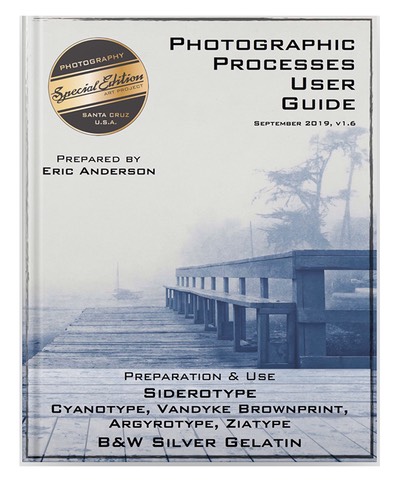Land / Sea / Sky
Saturday, September 28th, Two Thousand and Nineteen
Using Dr. Mike Ware’s newly devised Simple Cyanotype process (link) to celebrate World Cyanotype Day, Land / Sea / Sky, I’ve produced a series of greeting cards entitled ‘Cards of Blue’. This series captures the essence of daybreak on the Morro Back Bay, Baywood Park, California.
Back on the Bay

Blue as the Pier

Twilight Passes
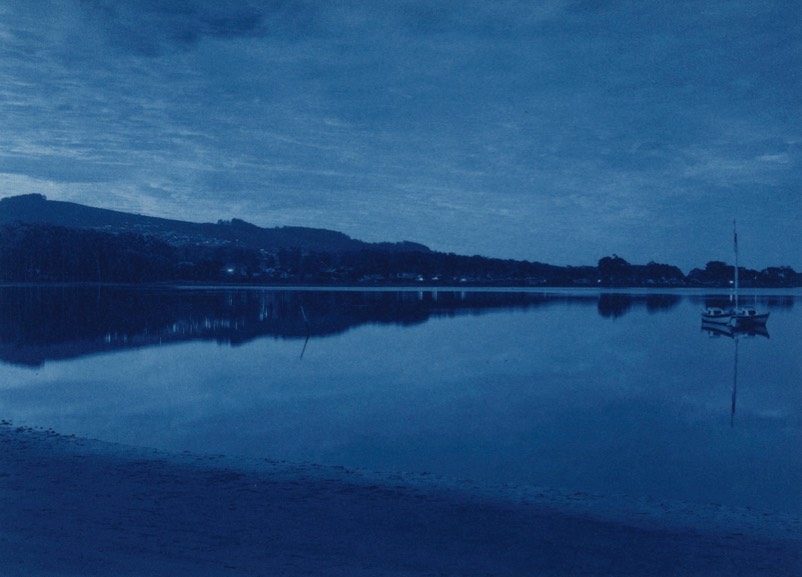
Morning Rises
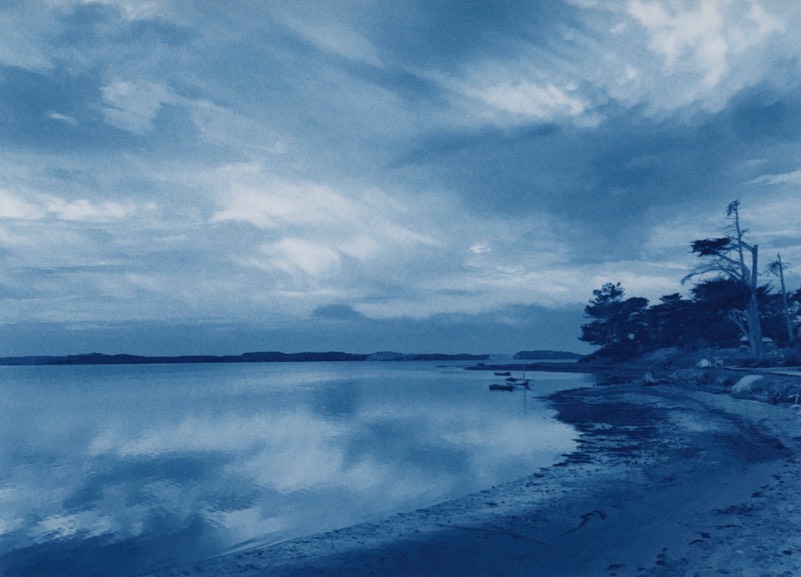
Day is Awake
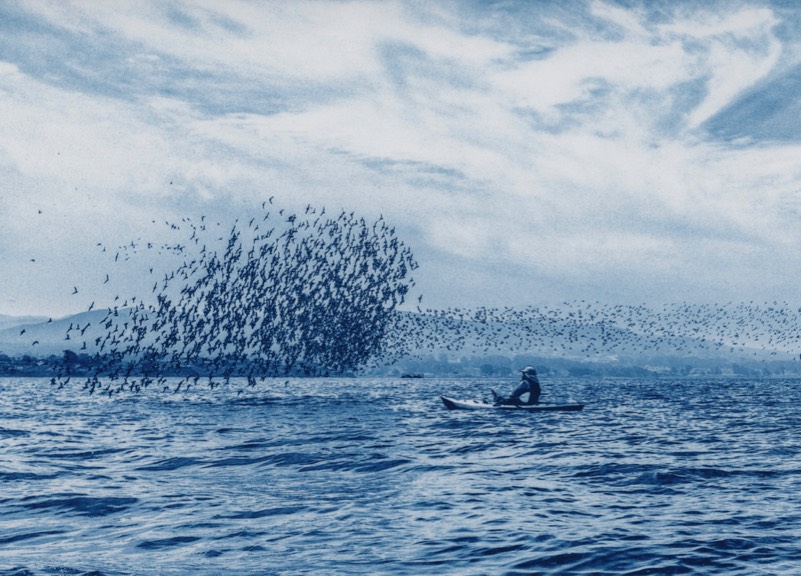
Card Back

–––––––––––––––––––––––––––––––––––––––––––––
My World Cyanotype Day greeting cards were developed onto COT320 fine art paper, producing splendid sky blue highlights and Bleu de France midtones with dark blue/black shadows. Dr. Ware’s new Simple Cyanotype (link) emulsion renders images with a wonderful density range, extremely fine grain, and virtually no image bleed.
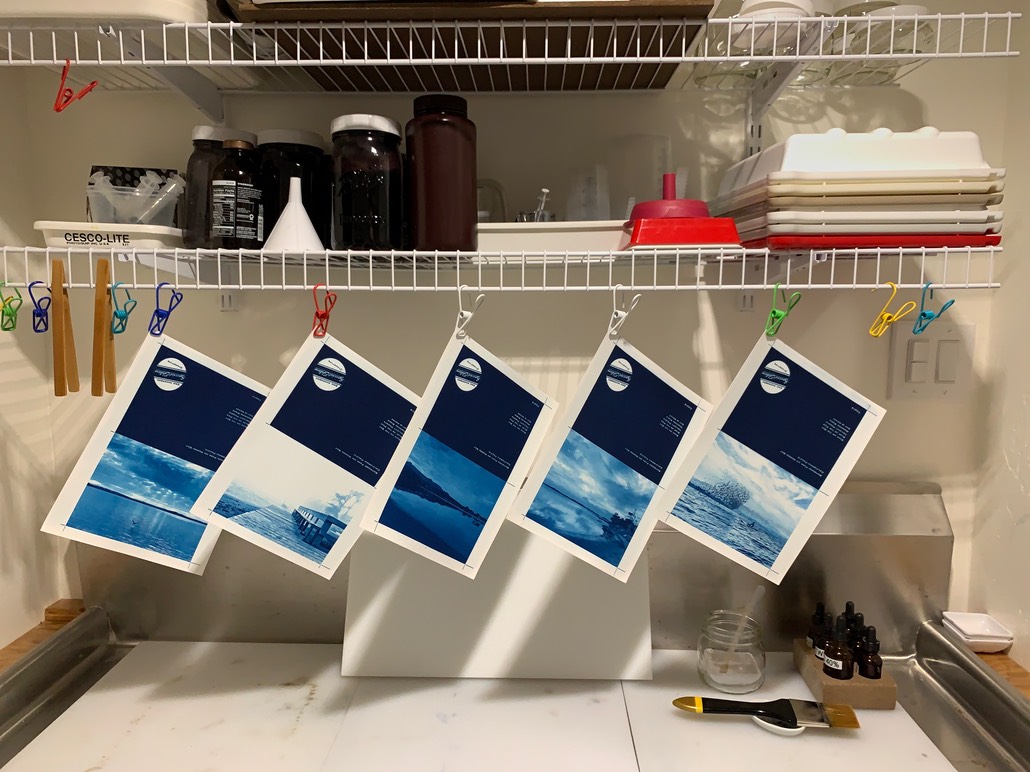
–––––––––––––––––––––––––––––––––––––––––––––
Congratulations to Dr. Mike Ware on his keen insights and inspiration (link) in creating this new single bottle Simple Cyanotype emulsion. This new formulation surpasses the abilities of the classic A/B formulation in the richness of deep tonality, lack of image bleeding into highlights, and the superb fine grain within the resultant image. The formulation is simple to mix together with inexpensive and readily available chemistry with the added benefits of being relatively safe around children and not harmful to the environment.
With the first oder of celebrating World Cyanotype Day completed with my greeting cards series 'Cards of Blue', I've also just completed the second order of fun - Updated our Siderotype Processes User Guide to include a chapter on Simple Cyanotype. We find the Simple Cyanotype formulation so significant that we decided our user guide would be incomplete without it. With this addition we include the working steps to its use as well as a paper survey of its behavior similar to what is found in our Siderotype Paper Survey eBook & PDF formatted books.
Happy World Cyanotype Day!
Eric Anderson
Special Edition Art Project
Every science begins as philosophy and ends as art……Science is the captured territory; and behind it are those secure regions in which knowledge and art build our imperfect and marvelous world. Philosophy seems to stand still, perplexed; but only because she leaves the fruits of victory to her daughters the sciences, and herself passes on, divinely discontent, to the uncertain and unexplored.
– Will Durant, The Story of Philosophy (1926)
–––––––––––––––––––––––––––––––––––––––––––––
Technical details of our experience with Simple Cyanotype
Advantages:
Simple Cyanotype has several practical advantages over the classic A/B formulation
- The darkest density of the cyanotype print is more ‘black’, a dense deeper darker blue - blacker blacks as it were.
- During water development / clearing, there is no bleeding of the densest areas into the highlights. This is a big deal as we can now reproduce very fine contrasty details in our final prints.
- The grain of the image is ultra fine, even on papers where a resultant grainy image is the norm.
- Inexpensive and simple process chemistry
- Relatively safe around children and the environment
- Shelf-life of the sensitizer can be greatly extended by simply delaying until needed the final ingredient step of mixing in the potassium ferricyanide by holding the (Step 3) Citric Acid / Ferric Nitrate / Ammonia Solution mix in a well-stoppered, labeled and dated, brown glass bottle. Once the potassium ferricyanide mixing step (Step 4) is complete, let the working solution sit overnight before first use. Per Dr. Ware: If less sensitizer is required for a session, then measure out the required volume of (Step 3) and divide it by 9.5 to find the correct weight in grams of potassium ferricyanide to dissolve in it.
Exposure:
When using our Special Edition Art Project exposure correction curves and working processes we are seeing about the same exposure times as with the classic A/B formulation.
COT320 fine art and Lanaquarelle watercolor papers are two common papers used in our studios and work very well with Simple Cyanotype. Both are readily available from art and photographic supply stores. Our recommendation when using the low contrast Simple Cyanotype recipe (lowest ammonia concentration):
- COT320: SEAP Vandyke Brown (VDB) correction curve
- Lanaquarelle: SEAP Cyanotype correction curve
- Our standard Cyanotype A/B exposure times for these papers (COT @ ~17 minutes and Lana @ ~20 minutes), and 30 seconds development rinse time of 0.05% - 0.075% citric acid (two or three dropper squirts of 40% acid into 48oz water) followed by tap water rinses until the print is fully cleared of excess emulsion (ie: no more blueing of the wash water, approximately 15 minutes of agitated washing).
- Dr. Ware’s recommended exposure correction is the silver gelatin curve, matching our results as well, which will produce good tonal range with COT320 at an exposure time of approximately 9 minutes (again, matching Dr. Ware’s results). This is all about the levers employed to produce an image to the satisfaction of the practitioner.
The Print Density Levers:
There are however levers that can be put into play to get the shorter exposure time results expected by Dr. Ware in his Simple Cyanotype treatise.
- Ammonia Concentration – low contrast to high contrast with increasing concentration per Dr. Ware’s formulation guide.
- Exposure time – more exposure produces a denser image out of the UV light box. A shorter exposure will need an appropriate exposure correction curve and a more aggressive citric acid development bath, upwards of the 30 second 1% bath recommendation of Dr. Ware.
- Citric development bath – higher concentration and/or longer developing time results in deeper densities across the image while risking the ability to fully clear the highlights. Lower the concentration / reduced time results in less staining and higher contrast as the highlights begin to blow out. The gross level knob here is citric acid developing bath concentration; the fine tuning knob is development time in the bath.
- Exposure Correction Curve – This is paper, exposure time, and development bath dependent. Our tests have shown acceptable results with COT320 using the SEAP Silver Gelatin correction curve and around 9 minutes exposure time using a 30 second weak critic acid development bath of 0.05%. Overall for COT320 we prefer to use the SEAP VDB curve with a 17 minute exposure and a 30 second 0.075% citric acid development bath.
Creating the Simple Cyanotype emulsion:
Follow Dr. Ware’s Simple Cyanotype mixing directions very closely. If you can follow the directions for making a cake, you can easily make up this Simple Cyanotype emulsion. Mix powder into solution in small increments - a few pinches at a time until all of the powder is mixed into solution, then move to the next step. Go slowly, take your time. It is important that the individual chemicals form the new chemistry slowly so as to produce a stable final light sensitive emulsion. As this is the creation of a light sensitive emulsion, prepare the chemistry under low level incandescent or warm LED lighting.
The precision needed for the weights and measures are, again, along the lines of making a cake. Be precise, but don’t sweat over small inaccuracies. The resultant single bottle emulsion color will be yellowish green, similar to the classic A/B cyanotype formulation when mixed into a working solution, with the added bonus of no mold growth over time.
Simple Cyanotype emulsion has a slight odor of ammonia that will dissipate over time, be aware of this if working in confined spaces. Keeping the emulsion in a capped brown glass bottle and refrigerated when not in use will greatly extend its working lifetime by several months. We have been successfully using a twelve week old mix that was six weeks at room temperature and six weeks refrigerated at 52°F, always stored in the dark.
Special Note: Use reagent grade ammonia. Don’t mess around with ammonia of unknown constitution as it will simply result in the immediate creation of Prussian Blue ink - pretty cool if that is what you are after, but not if you want to create wonderful Cyanotype prints. The ‘shake it and have no bubbles’ trick to check for ‘pure’ ammonia is a fallacy. Pharmacy and hardware store ammonia is generally not pure and may not form bubbles when shaken. Don’t waste your time and chemistry - use reagent grade ammonia only.
Chemistry and Where to Purchase:
In the States we prefer Bostick & Sullivan and/or Photographers’ Formulary for our chemistry needs. We found reagent grade ammonia at Photographers’ Formulary.
- Citric Acid (CAS 5949-29-1)
- Ferric Nitrate (CAS 7782-61-8)
- Ammonia Solution (CAS 1336-21-6) (28% from Photographers’ Formulary)
- Potassium Ferricyanide (CAS 13746-66-2)
- Tween 20 10% (CAS 9005-64-5)
Mixing and Coating:
Simple! Just grab a couple milliliters of emulsion, add some Tween 20 10% surfactant, and apply this working solution to your medium. Our standard Siderotype 2ml emulsion per 8x10 is sufficient when applying Simple Cyanotype via our preferred Richeson 9010 brush.
The use of Tween surfactant is highly recommended to help the emulsion penetrate into the paper’s fibers. There are no rules in this case; use as much as is needed to create images to satisfaction. We are finding at least 1gt (drop) Tween per 1ml emulsion used and maybe a drop extra just for good measure works wonders.
A single coat of Simple Cyanotype will produce deep densities, well defined midtones, and crisp highlights. We have not yet characterized multiple coatings for their possible efficacy.
Drying time of the emulsion after applied to the paper: 30min in a dark box / paper safe followed by 30min with a light fan blowing into the box (in the dark of course) is sufficient as a minimum dry time (70F at 65%rH as is average in our studios). We do not yet know if our preferred papers fog over time, so we make up at most 3x sheets at a time and use them one after the other in quick succession.
Resulting tonality, grain, and image bleed:
Tonality: With the exception that Simple Cyanotype produces far darker blues in the highest density areas of the print, the tonality of the blues are similar to those of the classic A/B Cyanotype formulation on the papers we tested. COT320 producing sky blue highlights and Bleu de France midtones. Lanaquarelle producing more of a steel blue tonality.
Grain: With both COT320 and Lanaquarelle papers the resultant grain can be graded as very fine as compared to the grain seen with the classic A/B Cyanotype formulation in these same papers.
Bleed: Image bleed is pretty much non-existent with Simple Cyanotype. Very fine high contrast details come out crisp and clear, again providing Simple Cyanotype a high advantage over other cyanotype formulations.
COT320 Fine Art Paper
10 & 15 Minute Exposures
Special Edition Vandyke Brown Correction Curve
Lanaquarelle Watercolor Paper
20 & 25 Minute Exposures
Special Edition Cyanotype Correction Curve
